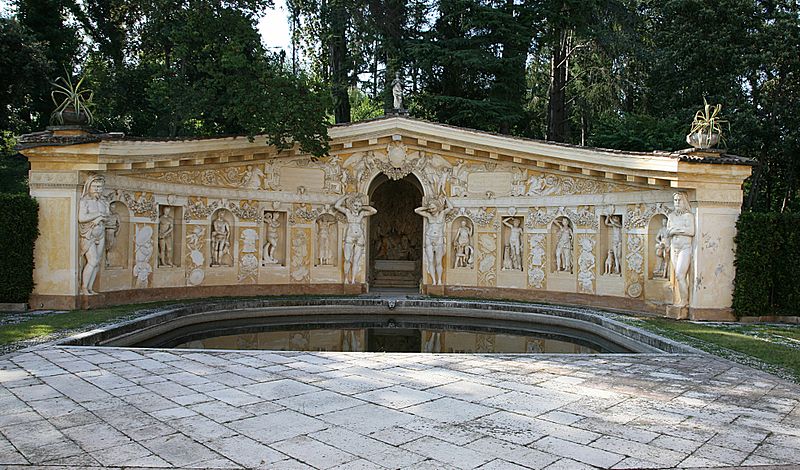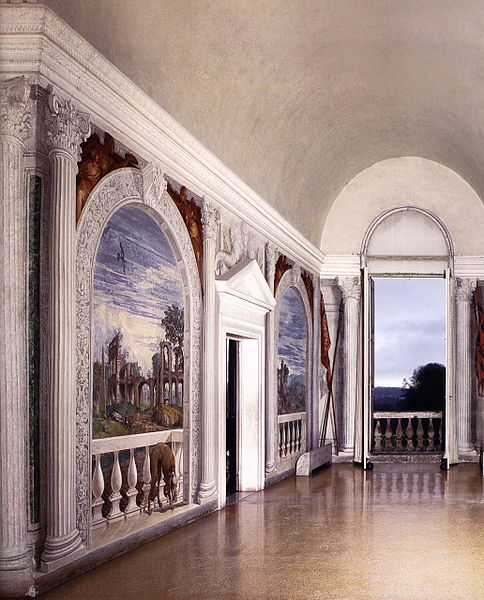
Villa Barbaro
This post is also available in:
 Italiano (Italian)
Italiano (Italian)
Villa di Maser (also known as Villa Barbaro) is one of the masterpieces of Andrea Palladio (an architect of the XVI century), built between 1554 and 1560 for the humanist Daniele Barbaro and his brother Marcantonio Barbaro, the ambassador of the Republic of Venice. The previous medieval palace was thus turned into a country abode specifically suited for researching arts and intellectual contemplation; it was decorated with several frescoes by Paolo Veronese.
Since 1996, it has been a UNESCO World Heritage Site. The villa is still inhabited by its owners and is a thriving agricultural facility, producing excellent wines exported all over the world.
THE VILLA
The villa stands halfway up the Asolo hills, not far from a spring which, according to the tradition, was a place of worship and perhaps the site of a temple. The alignment of the residential body and the “barchesse” (the rural service buildings dividing the owners quarters, from that of the farmers) in a compact unit represents a new architectural achievement by Palladio.
The central body, which protrudes considerably from the “barchesse” features a prominent facade with four Corinthian columns and an elegant balcony with balustrades. There’s also the noble floor reserved for the family and the guests, with windows surmounted by triangular pediments, while the ground floor features with curvilinear ones.
The “barchesse” are also on two floors, with a five-arched portico that interacts with the daily life in the villa: in fact, it offers protection from the elements and allows to quickly move from one side of the residence to the other.
The agricultural wings, flanked by two dovecotes, are decorated with two sundials: the one to the west marks the time and the beginning of the seasons, while the eastern one is a zodiac calendar showing the sun entering each corresponding sign.
Inside the building, the painter Paolo Veronese created one of the most important frescos of the Venetian XVI century. Each room was named after the very frescoed scenes, such as the “Hall of Olympus” – with Greek gods painted in the centre of the barreled vault. Several landscapes with ancient ruins and simple daily activities are represented as well: there are female figures playing musical instruments, weapons and flags as a testament to heroic deeds, as well as mythological legends.
At the foot of the slope, Palladio later built a small temple with the classical Pantheon style: it was intended to fulfil the double function of a noble chapel and a parish church for the village of Maser.
The Villa currently houses a collection of carriages, with about thirty vehicles from the XIX and XX centuries.
THE GARDEN
Externally, north of the villa, there’s an elegant and imposing Nymphaeum: it’s the work of the sculptor Alessandro Vittoria, who also created the Neptune fountain as an entrance to the south side of the villa and decorated the park with several sculptures by other artists.
To the side of the entrance staircase, there some simple gardens which used to be enriched with box hedges (Buxus sempervirens) arranged into elegant Italian design. They ideally continue beyond the road in a semicircular exedra with the fountain of Neptune in the centre, and even further along the tree-lined avenue that leads towards the plain.
This post is also available in:
 Italiano (Italian)
Italiano (Italian)
Contatti
Via Cornuda, 7 - Maser(TV)
0423 923004
visite@villadimaser.it
Altre info
Visita alle sei sale affrescate da Paolo Veronese: adulti 6,00 euro; over 65 5,00 euro; gruppi (minimo 25 persone solo su appuntamento) 4,50 euro; studenti (15-23) 4,50 euro; bambini (6-14) 3,00 euro; famiglie (2 adulti+3 bambini) 16,00 euro. Lo sconto comitiva non si applica il martedì e sabato pomeriggio, domenica e festivi.
Per il periodo e gli orari di apertura consultare il sito internet







